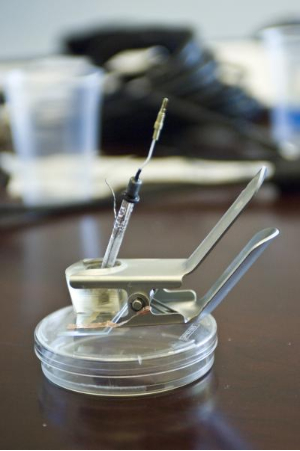
MIT researchers create PV technology that repairs itself
By DE staff
General electricityMolecules can turn sunlight into electricity and can be broken down and quickly reassembled.

Photo credit: Patrick Gillooly, MIT
Plants are good at doing what scientists and engineers have been struggling to do for decades: converting sunlight into stored energy, and doing so reliably day after day, year after year. Now some MIT scientists have succeeded in mimicking a key aspect of that process.
One of the problems with harvesting sunlight is that the sun’s rays can be highly destructive to many materials. Sunlight leads to a gradual degradation of many systems developed to harness it. But plants have adopted an interesting strategy to address this issue: They constantly break down their light-capturing molecules and reassemble them from scratch, so the basic structures that capture the sun’s energy are, in effect, always brand new.
That process has now been imitated by Michael Strano, the Charles and Hilda Roddey Associate Professor of Chemical Engineering, and his team of graduate students and researchers. They have created a novel set of self-assembling molecules that can turn sunlight into electricity; the molecules can be repeatedly broken down and then reassembled quickly, just by adding or removing an additional solution. Their paper on the work was published on Sept. 5 in Nature Chemistry.
Strano says the idea first occurred to him when he was reading about plant biology. "I was really impressed by how plant cells have this extremely efficient repair mechanism," he says. In full summer sunlight, "a leaf on a tree is recycling its proteins about every 45 minutes, even though you might think of it as a static photocell."
One of Strano’s long-term research goals has been to find ways to imitate principles found in nature using nanocomponents. In the case of the molecules used for photosynthesis in plants, the reactive form of oxygen produced by sunlight causes the proteins to fail in a very precise way. As Strano describes it, the oxygen "unsnaps a tether that keeps the protein together," but the same proteins are quickly reassembled to restart the process.
This action all takes place inside tiny capsules called chloroplasts that reside inside every plant cell — and which is where photosynthesis happens. The chloroplast is "an amazing machine," Strano says. "They are remarkable engines that consume carbon dioxide and use light to produce glucose," a chemical that provides energy for metabolism.
